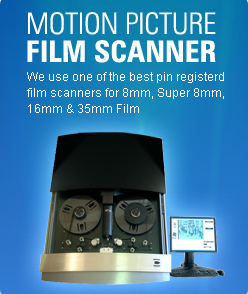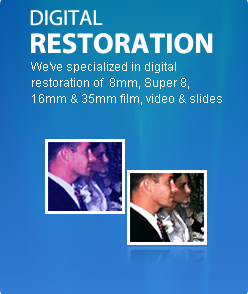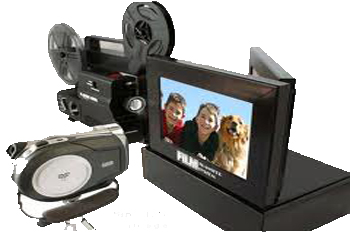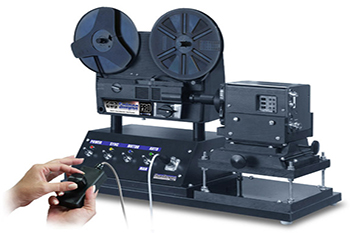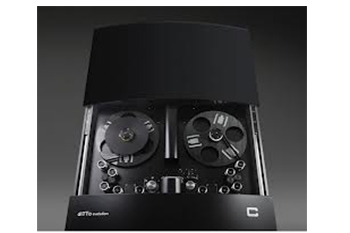
Film Conversion Equipment
Film Scanning and Film Transfer Equipment Types
The type of film scanning machine used for your 8mm, Super 8 or 16mm film conversion will have as much of an impact on the quality you receive as the resolution of the scan itself will. For example, if you wanted to digitize a photograph and tried doing it two different ways. You first put the photograph down on a table and took a picture of it using your smart phone or camera. Then you took the picture and scanned it using a flatbed scanner. If you compare the two side by side on your computer it will become really obvious that the flatbed scanner produced a digital image as good as the photograph. However, the picture you took with your phone or camera does not look close to the quality of the original photograph.
The same goes for scanning your 8mm, Super 8 or 16mm film. The real-time and frame by frame machines below are using a camcorder to take a picture of your film. The motion picture film scanner and Datacine machine are scanning the film. The results will be significantly different.
Film Conversion Equipment |
|
Real Time
|
|
Frame by Frame
|
|
Professional Film Scanners
|
|
Equally important as resolution is the type of film transfer. There are a few basic types of film transfer processes. More than 80% of the companies out there today use a real-time transfer. Any type of real-time film transfer will result in video that is 40-50% worse than the film’s current condition.
So, at this point you’ve learned that film transfers can capture at standard definition (480 lines), high definition (1080 lines) or 2K (1556 lines). You’ve also learned about the 3 different types of film transfers being used today. In order from least to best quality we have:
South Bend Fun Facts: The county seat of St Joseph County, South Bend sits 95 miles east of Chicago, Illinois. Large nearby cities include Elkhart (15 miles to the east), Gary (65 miles to the west), Fort Wayne (85 miles to the southeast), and Benton Harbor, Michigan (36 miles to the north). Major highways servicing the city include Interstates 80 and 90, U.S. Routes 20 and 31, and Indiana State Highways 2, 23, and 933.
Indiana Fun Facts: Its capital has been at Indianapolis since 1825. Indiana sits, as its motto claims, at “the crossroads of America.” It borders Lake Michigan and the state of Michigan to the north, Ohio to the east, Kentucky to the south, and Illinois to the west, making it an integral part of the American Midwest. Except for Hawaii, Indiana is the smallest state west of the Appalachian Mountains. After the American Revolution the lands of Indiana were open to U.S.
